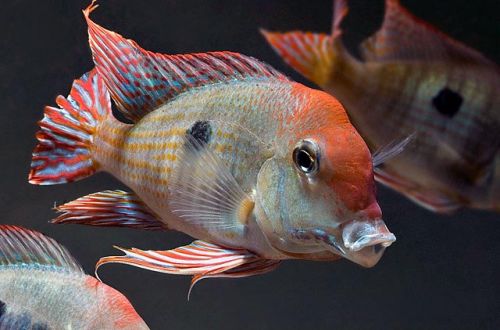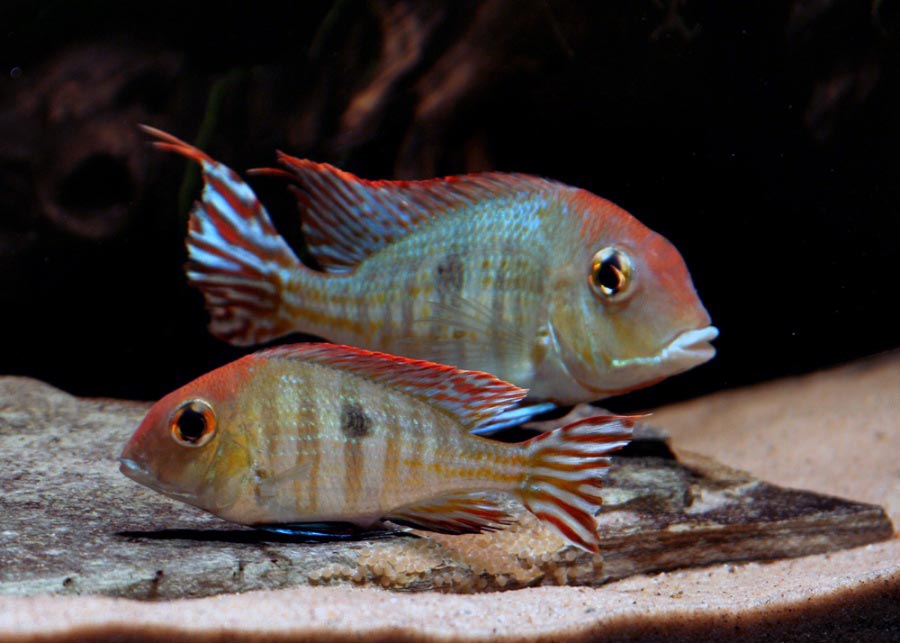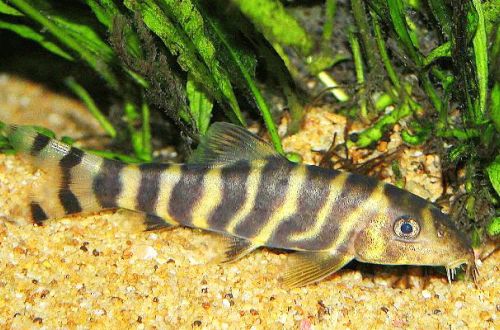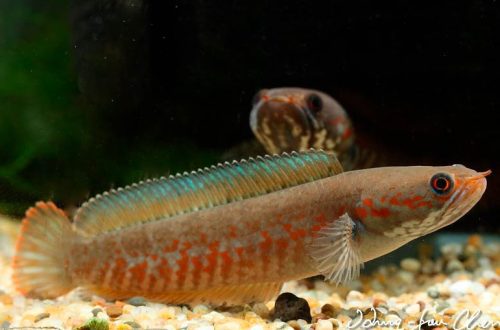
Geophagus redhead
Geophagus Orangehead or Redhead, scientific name Geophagus sp. “Orange head”, belongs to the Cichlidae family. A popular aquarium fish from among the South American cichlids. Easy to keep and breed, perfectly compatible with many freshwater species.

Contents
Habitat
It comes from the central part of Brazil (South America) from the lower basin of the Tapajos River – a large right tributary of the Amazon. Another population lives in the Araguaia River in the interior of the continent. There are huge spaces between these rivers and they are not directly connected to each other. And although the fish are supplied under the same name, a number of researchers have doubts about their belonging to the same species. Perhaps in the future, Geophagus from the two rivers will be separated into independent species.
The water in the Araguay River is clear and colored brown due to the abundance of tannins formed as a result of the decomposition of plant organic matter (roots, tree branches, leaves, coastal grasses, etc.). The Tapajos river is characterized by turbid waters, the so-called “white water”, due to the large amount of suspension-like suspension. Turbidity increases during the rainy season. In both cases, the habitat is similar – sandy, silty substrates littered with fallen trees, providing shelter for many species of fish.
Brief information:
- The volume of the aquarium – from 600 liters.
- Temperature – 26-30°C
- Value pH — 4.5–7.5
- Water hardness – 1–10 dGH
- Substrate type – sandy
- Lighting – subdued
- Brackish water – no
- Water movement is weak
- The size of the fish is 20–25 cm.
- Food – any sinking food
- Temperament – peaceful
- Content in a group of at least 5–8 individuals
Description

Adults reach a length of 20-25 cm. Males are larger and have more saturated colors. The dorsal fin is pointed. Alpha males often develop a hump on their heads. The body color is gray with rows of pale orange stripes and strokes. The head is orange, closer to red. Bright fins combine blue and red colors.
Food
Fish feed near the bottom, picking up a portion of the soil in their mouths and sifting it through the gills, filtering out food particles, so great attention should be paid to the soil. The diet should be varied with a sufficient amount of plant components. In a home aquarium, sinking food should be fed in small portions 3-4 times a day. It is worth noting that despite the small size of the fish, they can only take small particles of food.
Maintenance and care, arrangement of the aquarium
The optimal aquarium size for a group of 6-8 fish starts at 600 liters. The design is arbitrary, the only important element of the decor is the ground. Due to the feeding habits of Geophagus Redhead, it is desirable to use a sandy substrate that does not contain large and abrasive fragments that can get stuck in the fish’s mouth.
Although the design requirements are quite low, the fish will still look more harmonious in an environment that resembles its natural habitat – snags that form reliable shelters, subdued lighting … Fallen leaves are also part of the natural environment, and are often used in aquariums, but in this case, use they are not recommended. They can unnecessarily clog the soil and potentially become a problem for normal nutrition.
Maintaining stable water conditions within an acceptable range of temperatures and basic hydrochemical parameters (pH, dGH) is of the utmost importance for long-term maintenance, and the accumulation of nitrogen cycle products (nitrites, nitrates, ammonia) to dangerous concentrations should not be allowed. To this end, the aquarium is equipped with all necessary equipment and regular maintenance procedures are carried out.
When choosing a filtration system, it should be borne in mind that it must cope with a large amount of suspension that occurs when fish are sprinkled. Most filters can quickly become clogged with sand, reducing their effectiveness and, in the worst case, failing. Usually a double cleaning system is used. First, water enters the buffer tank, where large particles settle, and small particles are retained by a mechanical filter, and only then is pumped into the main filter.
Behavior and Compatibility
Calm peace-loving fish, able to get along peacefully even with small species. Intraspecific relationships are built on an internal hierarchy headed by the alpha male. At the same time, subdominant individuals do not experience harassment from relatives. It is recommended to maintain a group size of 5-8 individuals. It is not uncommon for a sexually mature male and female to form a pair that persists for a long time.
Breeding / breeding
Under favorable conditions, breeding Geophagus Redheads will not be difficult. With the onset of the mating season, the male and female occupy an area at the bottom of the aquarium, in the center of which there will be some kind of flat surface, for example, a flat stone. After a short courtship, the fish begin spawning, sometimes lasting several hours. The female lays eggs in batches of several. The incubation period is approximately 72 hours. All this time, the parents are in close proximity to the masonry, protecting it.
Care for offspring continues after the appearance of fry. In case of danger and at night, they hide in the mouth of the female, sometimes the male also joins this process. As they grow older, the fry will use this unusual shelter less and less.
Fish diseases
The main cause of diseases lies in the conditions of detention, if they go beyond the permissible range, then immunity suppression inevitably occurs and the fish becomes susceptible to various infections that are inevitably present in the environment. If the first suspicions arise that the fish is sick, the first step is to check the water parameters and the presence of dangerous concentrations of nitrogen cycle products. Restoration of normal/suitable conditions often promotes healing. However, in some cases, medical treatment is indispensable. Read more about symptoms and treatments in the Aquarium Fish Diseases section.





